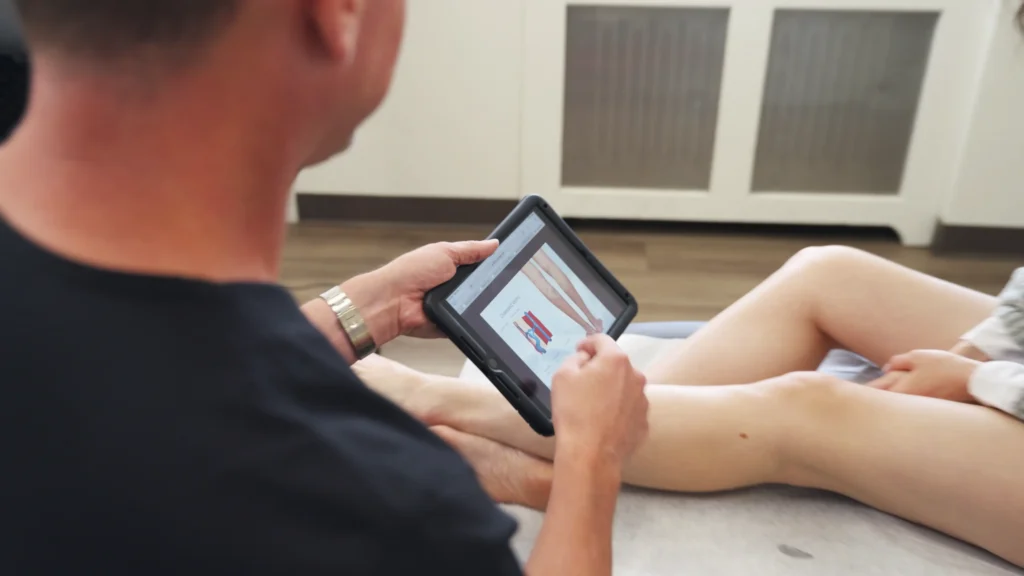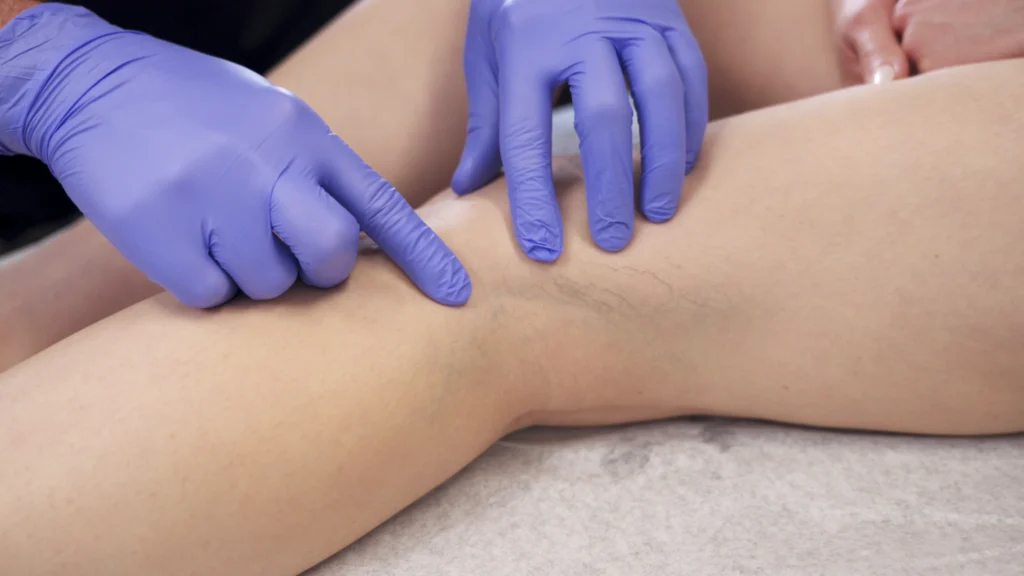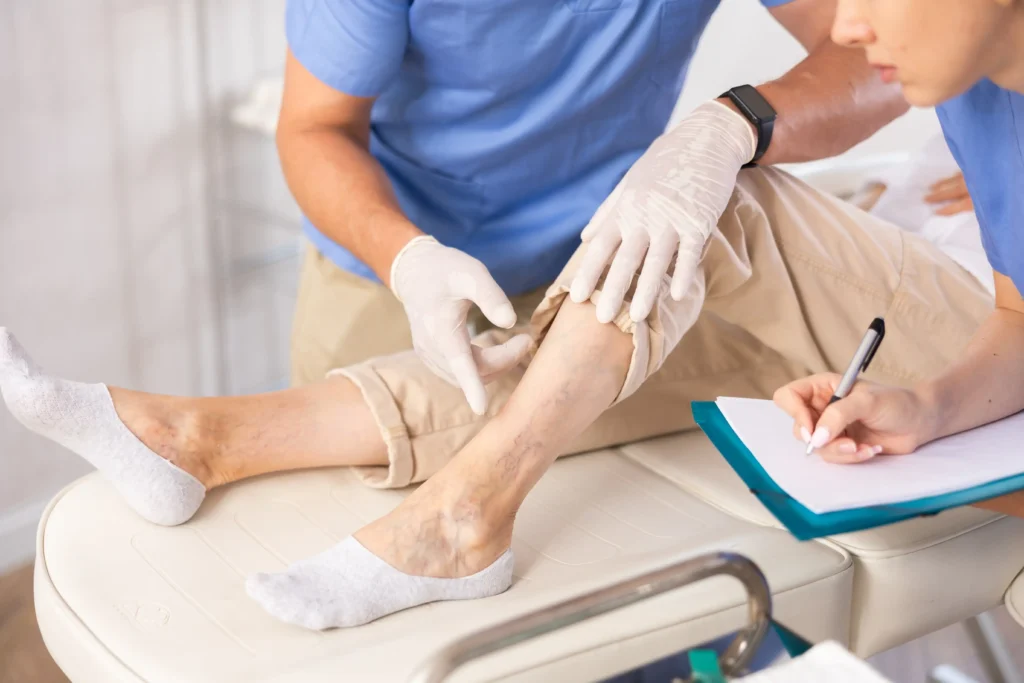This is How You Can Relieve Your Varicose Vein Pain!
You’ve had a long day at work, standing for hours, and now you’re finally home. Your legs feel heavy and achy, and the bulging veins seem more pronounced than ever. You’re no stranger to varicose vein pain, and finding relief feels like a never-ending battle. Whether you’re dealing with discomfort, swelling, or just frustration with the appearance of your legs, you’re not alone. Millions of people, just like you, suffer from varicose veins.
Fortunately, there are several ways to relieve the discomfort and treat the root cause of varicose veins. At Vein Treatment, we specialize in offering personalized care at our state-of-the-art vein clinics across New York, New Jersey, Long Island, Maryland, and California. Whether you want to manage your symptoms at home or are considering varicose veins treatments, this guide will walk you through some of the most effective options. Keep reading to learn how to alleviate varicose vein pain and discover the solutions that might work for you.
Elevate Your Legs
One of the simplest and most effective ways to relieve varicose vein pain is to elevate your legs. This helps reduce the pressure in your veins and promotes better blood circulation. When you elevate your legs above your heart level, gravity helps blood flow back to your heart, decreasing the pooling of blood in your veins, which is one of the primary reasons for varicose vein pain.
Try elevating your legs for 15 to 30 minutes several times throughout the day, especially after long periods of standing or sitting. This practice can significantly reduce swelling and pain, providing temporary relief. However, while leg elevation can help with the discomfort, it won’t eliminate the underlying cause of your varicose veins.
Stay Active and Exercise Regularly
Regular physical activity encourages healthy blood circulation and strengthens your leg muscles, which act as natural pumps to assist blood flow. Low-impact exercises like walking, swimming, cycling, and yoga can help reduce pain and swelling.
The key is to avoid high-impact activities like running or jumping, which can aggravate the condition. Aim for at least 30 minutes of low-impact exercise most days of the week to help prevent varicose vein pain from worsening. Strengthening your legs through these activities will also support your veins and improve overall circulation.
Wear Compression Stockings
Compression stockings are a go-to solution for many individuals suffering from varicose vein pain. These specialized stockings provide graduated pressure to your legs, helping the blood flow back toward your heart and reducing the pressure on your veins.
You can purchase compression stockings over the counter, or your vein specialist may recommend a specific type based on the severity of your varicose veins. Wearing compression stockings during the day, especially if you spend long periods standing or sitting, can alleviate discomfort and prevent the condition from worsening.
Maintain a Healthy Weight
Being overweight can increase pressure on your legs and worsen varicose vein pain. By maintaining a healthy weight, you reduce the strain on your veins and improve overall blood flow. A balanced diet rich in fruits, vegetables, whole grains, and lean proteins can help you manage your weight and support your vein health.
Incorporating foods that promote good circulation, such as those high in antioxidants, fiber, and omega-3 fatty acids, can also contribute to better vein health. Additionally, staying hydrated is essential for keeping your blood thin and flowing smoothly through your veins.
Avoid Prolonged Sitting or Standing
Prolonged periods of sitting or standing can aggravate varicose vein pain, as these positions make it harder for blood to circulate properly. If your job requires long periods of sitting or standing, take regular breaks to move around. Stretch your legs, walk, or shift your weight from one foot to the other to encourage blood flow.
If you work a desk job, consider using a footrest or periodically elevating your legs. Alternatively, if you’re on your feet for extended periods, take time to sit and rest throughout the day. These small adjustments can make a big difference in managing varicose vein pain.
Undergo Varicose Veins Treatments
While lifestyle changes and home remedies can help alleviate varicose vein pain, they won’t treat the underlying cause of your condition. For long-term relief, it’s important to consult with a vein doctor to explore minimally invasive varicose veins treatments. At Vein Treatment, our vein specialists offer a variety of advanced procedures to address varicose veins effectively.
Endovenous Laser Ablation
Endovenous laser ablation (EVLA) is a minimally invasive procedure that uses laser energy to close off the affected veins. The laser is inserted into the vein through a small incision, and the heat generated by the laser causes the vein walls to collapse and seal shut. Blood is then redirected to healthier veins, and the treated vein eventually fades.
Radiofrequency Ablation
Radiofrequency ablation (RFA) uses heat to treat varicose veins. However, instead of a laser, RFA employs radiofrequency energy to close the vein. This treatment is performed under local anesthesia and requires minimal downtime, making it a popular choice for many patients.
VenaSeal
VenaSeal is a cutting-edge treatment that uses a medical adhesive to seal the diseased vein. Unlike EVLA and RFA, VenaSeal does not require heat, which reduces the risk of nerve damage. The adhesive is delivered through a small catheter, and the vein is closed, allowing blood to reroute through healthier veins.
ClariVein
ClariVein combines mechanical and chemical methods to treat varicose veins. A rotating catheter is used to damage the vein walls, while a sclerosing agent is simultaneously delivered to seal the vein. This procedure is particularly effective for patients with tortuous veins that are difficult to treat with heat-based methods.
Sclerotherapy
Sclerotherapy involves injecting a sclerosant directly into the affected vein, causing it to collapse and fade over time. This treatment is particularly effective for smaller varicose veins and spider veins. Sclerotherapy requires no anesthesia, and patients can resume normal activities immediately after the procedure.
Ambulatory Phlebectomy
For larger, bulging varicose veins close to the skin’s surface, ambulatory phlebectomy may be recommended. This procedure involves making tiny incisions to remove the varicose veins. It is performed under local anesthesia, and the incisions are so small that stitches are not required.
Learn about our vein treatments and visit your nearest vein clinic to explore your options.
Varicose Veins FAQs
What causes spider veins and varicose veins?
What causes spider veins and varicose veins? Spider veins and varicose veins are caused by weakened or damaged valves in the veins. When these valves fail to close properly, blood pools in the veins, causing them to enlarge.
How to prevent varicose veins?
How to prevent varicose veins? To prevent varicose veins, maintain a healthy weight, exercise regularly, avoid prolonged sitting or standing, and wear compression stockings if recommended by your vein specialist.
When should I see a vein doctor?
You must see a vein doctor immediately if you experience persistent leg pain or swelling or if your varicose veins begin to worsen. However, you should ideally see a vein doctor when you first notice the early signs of varicose veins. If left untreated, varicose veins can lead to more serious health issues like blood clots or ulcers.
Is varicose veins surgery necessary?
Varicose veins surgery is no longer the first line of treatment for varicose veins. Minimally invasive treatments like endovenous laser ablation and sclerotherapy are highly effective and usually covered by medical insurance.
Contact Us for Vein Treatments
Varicose vein pain can be frustrating and debilitating, but relief is within reach. From lifestyle changes to advanced varicose veins treatments, there are many ways to manage your condition. At Vein Treatment, our Ivy League-educated, board-certified vein doctors offer personalized care at vein clinics throughout New York, New Jersey, Long Island, Maryland, and California. Contact us to schedule a consultation and learn how we can help you live pain-free.








